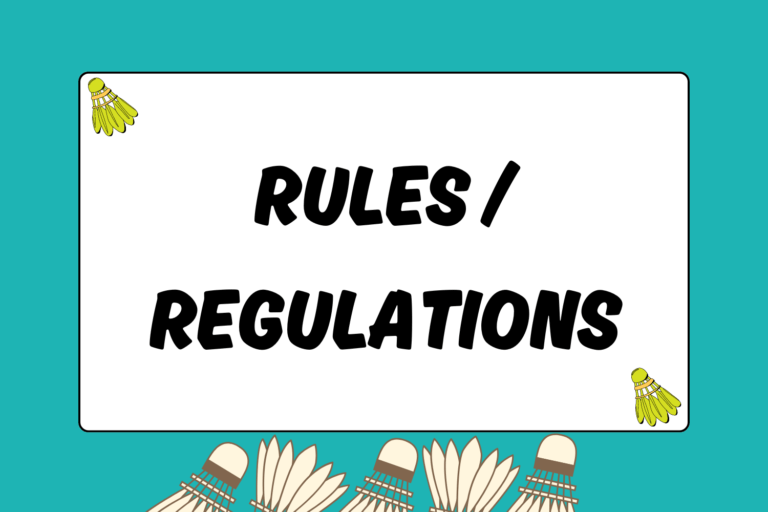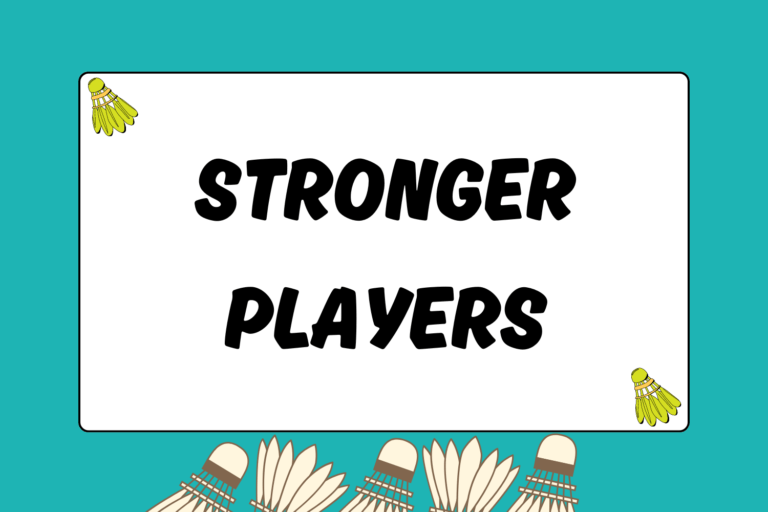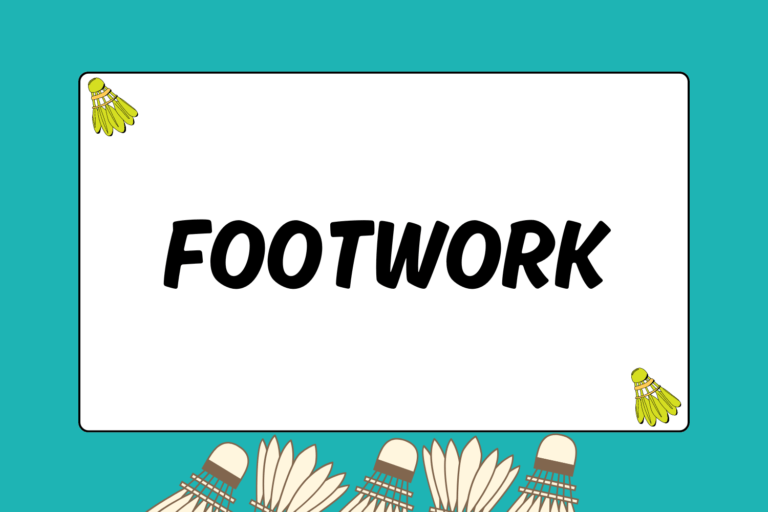Service in badminton is one of the most important and overlooked shots. A key to playing good badminton is to gain an advantage by forcing your opponent to hit a weak, high-arching shot. If you can do that consistently, you will get more opportunities to end the rally with an offensive shot or kill. The easiest and quickest way to do this is through service.
There are generally two styles of service: Forehand and backhand. These styles can be used interchangeably in both singles and doubles. This guide will go over the basics of service, including styles and usage.
Badminton Service Rules
- Serve diagonally: There are four service courts, with two on each side of the net. Service must be directed to and from diagonal service courts.
- Be stationary: When service is taken, the server must be stationary, with at least one foot in contact with the surface of the court.
- Stay inside the box: At the time of service, the server must not touch or cross the boundary lines of the service court.
- Below the waist: The entire shuttle must be beneath the waist at the moment of contact.
- Fluid motion: The racket must be fluid and moving in a forward direction.
This is the service style generally preferred in singles play but can also be used in doubles. The key to serving forehand is proper body positioning and transferring weight from the back foot to the front foot.
Step 1: Gripping the Racket
The forehand grip should be used for forehand service. The forehand grip, sometimes called the “handshake” grip, should resemble the act of shaking someone’s hand.
When held straight out in front of you, the racket’s head should be perpendicular to the floor. This grip will allow you to rotate your body and generate the power you need for service.
Step 2: Holding the Shuttle
Start by cupping the shuttle with your off-hand. This ensures that the shuttle will drop straight down instead of wobbling as it falls.
Next, hold the shuttle in this manner at a comfortable distance away from your body. Your arm should not be locked or stiff; instead, it should be at a distance that is natural to strike the shuttle. A common tendency for new players is to hold the racket beneath the shuttle to help hit the shuttle.
Your racket should be cocked back so that you can generate the necessary power with a full swing.
Step 3: Positioning in the Service Court
Position yourself near the center line in either service box. Make sure you stand with your legs about shoulder-width apart with your dominant foot back.
For singles service, you’ll want to stand about a step behind the short service line, which should be close to your base. After you’ve settled on a position, take a few practice strokes with an imaginary shuttle in hand.
The key here is to follow through with your stroke and shift your weight from the back to the front foot in a rocking motion.
Step 4: Hitting the Shuttle
Ideally, the shuttle should be struck at waist height to shorten the amount of time your opponent has to react to your serve. Doing this also makes it easier to serve the shuttle low over the net or high and deep over your opponent.
You should use an underhand stroke that crosses the body and ends up near your opposite shoulder on the follow-through.
Step 5: Aiming the Serve
You should aim your serve to land in the diagonal service box near the short or long service lines. Equally important is the path the shuttle takes to get there.
For short serves, the trajectory should be flat to force your opponent to return high. For long serves, the shuttle should travel high, out of reach of your opponent, forcing him to move back to return the shot.
It will take time to execute both serves consistently, but it’s too crucial to badminton to ignore.
Backhand Service
Although a significantly more difficult shot to master than the forehand serve, the backhand serve is much more versatile, as it is used regularly in both singles and doubles play. Backhand serves are more deceptive because of the short, quick motion used to serve both short and long.
However, in order to learn this serve you’ll need to be comfortable with the backhand grip. If you need help with your backhand grip or stroke, please check out the guide “How to Grip a Badminton Racket.”
Step 1: Gripping the Racket
There are many variations of the backhand grip, and different players have different preferences. Here, we’ll use the traditional backhand grip as a starting point.
The traditional grip has the thumb flushed along the fat side of the handle with the rest of the fingers wrapped around. When holding the racket this way, you should be able to point your thumb past both the upright and downward positions.
Step 2: Holding the Shuttle
Pinch the shuttle’s skirt just enough so that you can keep it secure between your fingers. You don’t want to grab too much of the skirt because your fingers will get in the way when you’re serving.
Hold the racket at a comfortable distance away from your body and rest your wrist on the head ever so slightly. Remember to keep the shuttle at waist height or below to maintain a legal serve.
Step 3: Positioning in the Service Court
As a general rule, you’ll want to stand as close to the intersection of the center line and the short service line as possible. This will help keep the distance and time the shuttle travels in the air as short as possible.
When serving, you should have your dominant foot forward and the other foot back to allow enough room for the racket to move.
Hot Tip: On Your Toes
To shorten the time the shuttle is in the air and allow for a flatter trajectory, stand on your tip-toes to give yourself more “height” when serving. This is a legal maneuver as long as both feet are in contact with the court.
With backhand service needing every bit of precision you can afford, the few inches you gain will be invaluable to improving your serve.
Step 4: Hitting the Shuttle
Your backhand service stroke should be taken using your backhand grip, with your forearm and wrist providing the power. Sometimes, the shuttle may be difficult to contact when simply letting it hang from your fingers. If you’re having this problem, angle the shuttle so the head faces the racket.
The motion of your arm should be continuous for your service to remain legal.
Step 5: Aiming the Serve
Like forehand serves, the backhand serve should be aimed near the short and long service lines. However, if you’re using the backhand serve for doubles play, it would be ideal to aim for one of the four corners of the service court.
Again, the trajectory of the shuttle is important because any short serves that are too high will be attacked by the receiver. Similarly, any long serves that are too low will be cut off without much effort on the receiver’s part.
Start by getting accustomed to serving low and short before attempting to serve long. The long serve, or flick serve, is particularly difficult to master because it requires both power and precision to hit well.
Serving in Style
The service style you use is ultimately your choice because it should fit your style of play. While forehand serves are generally more defensive and consistent, they are not often used in higher levels of competition.
In contrast, the backhand serve produces higher-quality short serves and deceptive long serves. Don’t worry about picking a serve and sticking with it because they are interchangeable even within a game.





